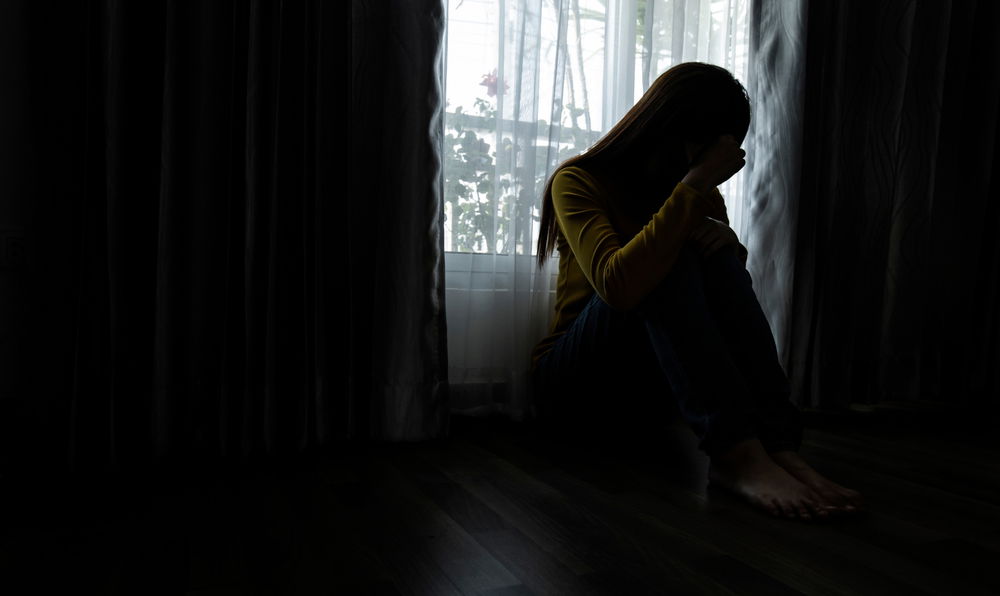Highlights
I am the mother of four boys, ages eight and under, with a baby girl on the way. Since the birth of my oldest son, it has been my quest to find the perfect schedule that will achieve family peace, work-life balance, and spiritual well-being. My journals are filled with time charts of trial and error, discouragement buffered by the belief that, like a scientist, for every discovery there are a thousand duds. My favorite seasons of parenthood are the times when we can just “be” and honor the rhythms of children’s naps and meals, playtimes and rest: during summertime when there’s no place to be, the dead of winter when dark night begins early.
The most stressful times have been when I’m trying to do too much at once—working from home and taking care of the kids without regular childcare—thinking it possible to cram in all my tasks during naptimes and after bedtimes, no room for margin of error. These days, I’m thinking often of all the employees who are now trying to do just that, the teachers who are tending to dozens of other children remotely while entertaining their own toddlers or homeschooling their teenagers, the parents who are now caring for kids by day and trying to work by night, the essential workers torn apart by the guilt of not being home with their kids. When I think of my own experiences of trying to balance work and parenting, what comes to mind are the too-frequent arguments between me and my husband, the anxiety and anger, and I shudder. That stress intensified my quest for the perfect schedule and for guides who could model a better way. I found wisdom in Holly Pierlot’s A Mother’s Rule of Life, Bruce Feiler’s The Secrets of Happy Families, and in Pope Francis’s Laudato Si when he speaks of limits: “The time has come to pay renewed attention to reality and the limits it imposes.” (How freeing to acknowledge my finite time as a garden wall to sit within rather than an obstruction to scale, what relief to embrace the limits rather than clamor and strive to have it all!)
Then, a visit to the Bruderhof—an intentional Christian community that, like the early Christians, shares their goods in common—piqued my interest in the way a communal structure of life supports families. We went there to interview members of the community for a piece we were writing comparing and contrasting the Bruderhof with the Amish community my husband grew up in, but I took away inspiration for our personal lives, as well.
Though “a community of goods” is not without its costs in privacy and independence, there is also evident peace and deep satisfaction. While there, I spoke with Nathan and Evelyn Vanderhoof, a couple whose four children were the same ages as mine, and I found myself in awe of the way the community takes care of so many practical needs—from meals in the communal dining hall to laundry that you drop off at the community laundromat and pick up after its been washed, dried, and folded by other community members.
“It’s this amazingly beautiful experience to unwrap these piles of laundry that are folded, sorted. I don’t have to do anything, you know,” Evelyn told me, smiling.
The community is walkable and the school and nursery are just yards from homes and places of employment, so nursing mothers can tend to their babies even during the workday. Work is taken seriously but has a definite end. No one is bringing home cellphones or laptops, and instead evenings and weekends are reserved for family time and community meetings. “So when we’re at home,” Evelyn begins, and Nathan finishes her thought, “we can really focus on the kids.”
Something that often surprises visitors is that the children are in nursery or school from 7:30 a.m. until 5:00 p.m. each day. The schoolchildren do have lunch with their parents and an hour at home in the afternoon for downtime before going back to school in the afternoon for outside activities and supper before returning home. “Yes, it’s a long day,” acknowledges Evelyn, adding that with no emails to check or computers or TV to interfere with family time, “We’re 100% with our children until they go to sleep.”
Evenings for the Vanderhoofs typically involve sitting with their kids around the table talking about the day over refreshments, reading on the couch together, singing songs before baths and PJs and bed.
Slowly over the last eight years of quest, a personal philosophy took shape, one that embraced limits and stopped trying to multitask in favor of carving out times for shorter, focused bursts of work. I cut back on work commitments, making that tradeoff between more time and less money. My husband took advantage of the flexible hours of his remote work and structured his schedule to allow him to transport the kids to and from school and to have family time in the early evening.
These ideals guided our family life aspirations but were still difficult to implement and maintain because to live them out was to swim culturally upstream.
Until recently.
While I know this pandemic is incredibly difficult for many families—lives and jobs lost, and extra strain and stress particularly on the working class—for our family, the main effect of the coronavirus has been more time together, and therefore a chance to prioritize life in the way we typically strive but fail to do. We are now without the drive to and from school, without sports practices and games, without the myriad little “busy-nesses” that crop up like spring weeds when we seek connection and community but do so in an overly-ambitious way—producing quick blooms that brighten but burst, roots shallow, with never enough time to cultivate truly deep relationship.
When the pandemic is over, will we find a new normal that continues to honor the demands and priorities of family life?
In this time, our children have become good friends again. They do their schoolwork and then spend long late afternoons outside with rocks and worms and our backyard chickens, making concerts with sticks and collecting all manner of natural things. The oldest teach the youngest new words. They fight but forgive. The three-year-old is finally potty training. The behavior problems and defiance of our once over-tired kindergartener have dissipated.
After work, my husband takes the kids outside while I cook. We eat dinner together, then crank up some music and do chores. Our eight-year-old does the dishes. The six-year-old vacuums. The three-year-old picks up his toys. The one-year old runs around the house squealing. My stress levels are lower, I make time to read and talk with the kids before bedtime tuck-in. By evening, the house is picked up, and in the peace and quiet, I can do something other than household chores, like take a walk, call a friend, or read a book.
I’ve tried to establish these basic routines many times in the past, but they’ve never stuck because we felt too busy. Before shelter-in-place, I found that the cultural status quo of packed schedules inhibited rhythm and routine, making family life extra challenging, particularly with young kids. For decades, cultural commentators and psychologists have been sounding the alarm about overscheduled kids and diminished time for family life. For families currently experiencing a slower pace and more time under the same roof, shelter-in-place is a chance to reevaluate one’s family culture and make necessary adjustments.
The question is, when the pandemic is over, will we find a new normal that continues to honor the demands and priorities of family life?
One possibility is that workplaces will become more flexible, allowing parents to prioritize their lives in ways good for the family without sacrificing work quality or productivity. In their recent IFS piece, Abby McCloskey and Angela Rachidi observe that with millions of working parents now working from home, “the new rhythms of teleworking point to a promising future for families—one where flexible work practices support parents and their children alike.” (That is not to say parents will no longer have need of some outside child care, but even so, there are certainly benefits to the extra time and flexibility that come with remote work.)
Beyond the workplace, will new social norms about activities and busyness emerge? Will we no longer see excessive busyness as bragging rights, but more like something to be stigmatized? The introvert in me would welcome this change in terms. Of course, we must still validate the importance of social relationships beyond the nuclear family unit—recent conversations on this blog highlight the fragility of the nuclear family when it is not embedded in a supportive community larger than itself. But depth of relationship, not breadth, should perhaps be the guide.
I should end by saying that today is not idyllic. My eight-year-old is crying because he misses his teacher and friends and is frustrated by his schoolwork, and everyone is out of sorts. I am looking forward to returning to normal—to school and sports, church and the YMCA, and especially to extended family gatherings. But I hope that I am able to take with me a fierce intentionality that retains only the most important of activities and cuts the things that become too much. I hope that we can retain some of the rhythms and routines we’ve established (chores, bedtime, family dinner). It is not something I can do alone—I’ve tried—but in the midst of the havoc of coronavirus, I see the makings of cultural renewal.
Amber Lapp is a Research Fellow at the Institute for Family Studies and, along with her husband David, co-investigator of the Love and Marriage in Middle America Project, a qualitative research inquiry into how white, working-class young adults form families and think about marriage.














